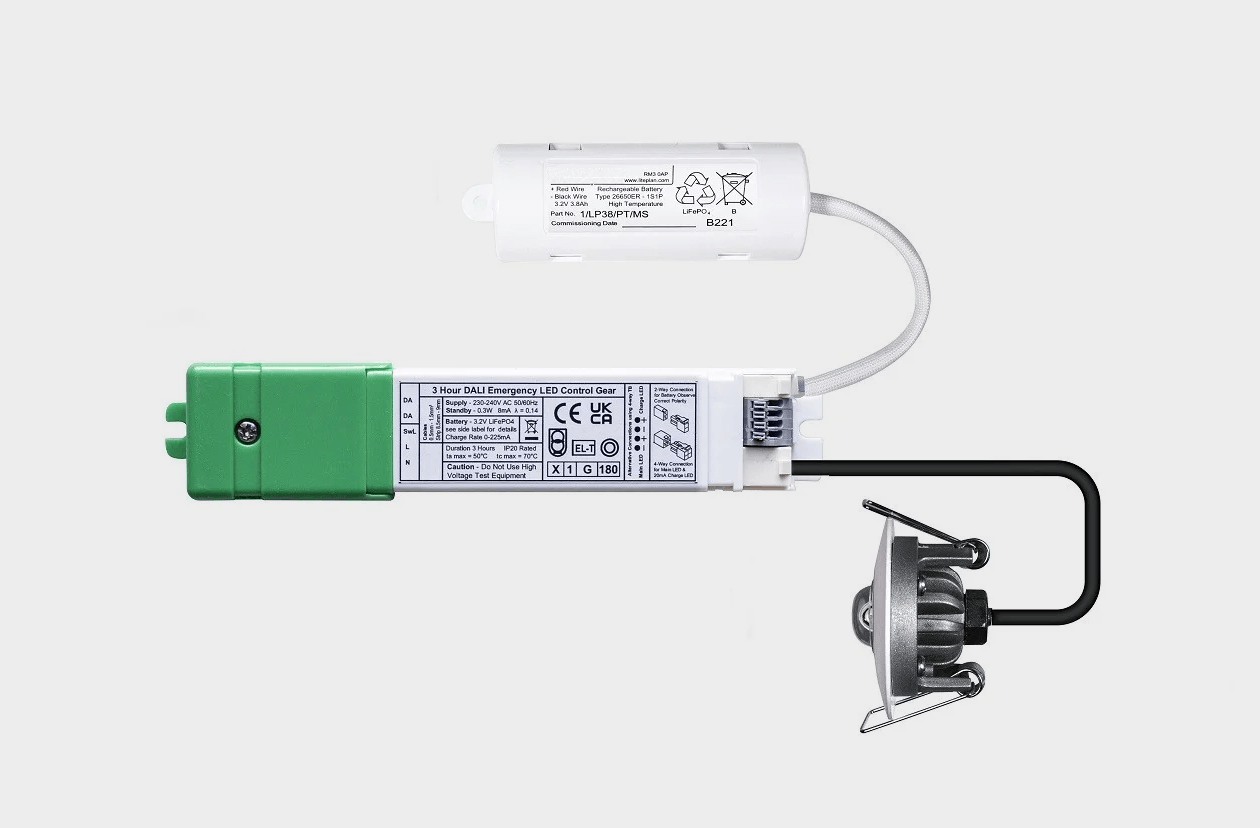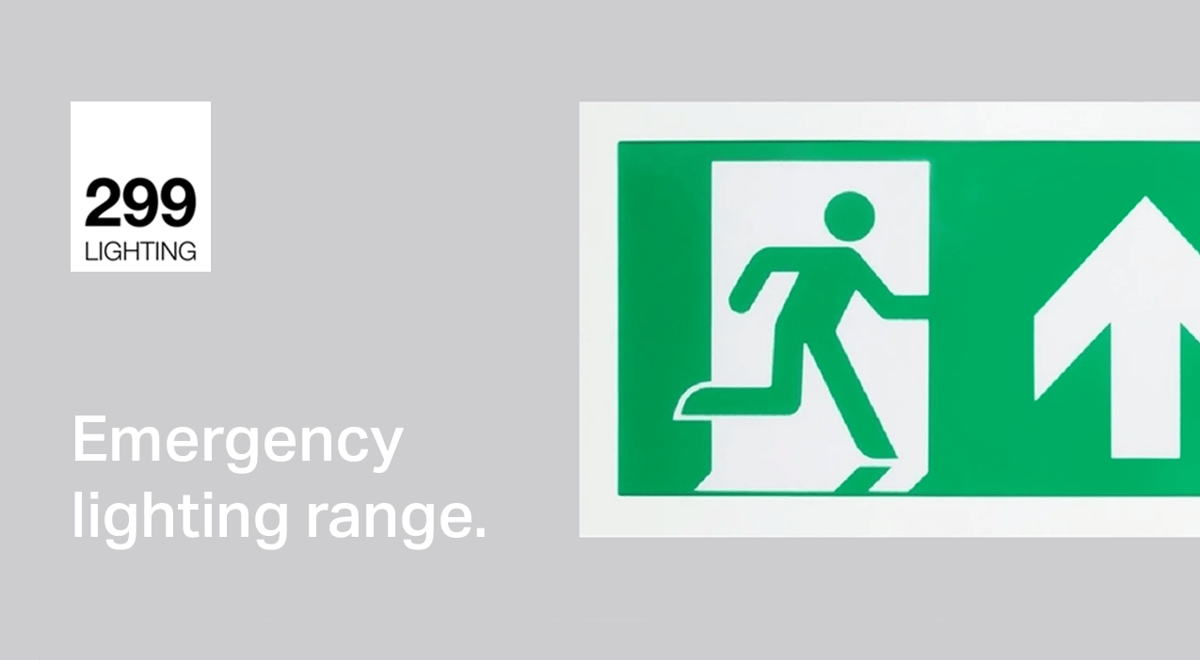How Self-Test Emergency Lighting Works

Building owners should be aware of routine testing of emergency lighting. The testing can be either a manual inspection or automatic testing.
Self-test emergency lighting is a type of lighting system that automatically checks its functionality and performance on a regular basis. It is designed to ensure that the emergency lights are always operational and ready to provide illumination during power outages or emergencies.
The self-testing feature of these lights eliminates the need for manual testing, which can be time-consuming and most importantly, prone to human error. Instead, the lights perform automated tests to verify their battery capacity, lamp functionality, and overall performance. These tests are conducted at regular intervals, such as weekly or monthly, depending on the specific regulations and guidelines in place.
During the self-test, the emergency lights simulate a power outage or emergency situation to assess their response. They may dim or switch off momentarily to mimic a loss of power and then restore to full brightness once the test is complete. If any issues are detected, such as a low battery etc., the lights will indicate a warning or alert, allowing for timely maintenance and repairs.
Benefits of Self-Testing Emergency Lights.
There are several benefits associated with self-testing emergency lights:
-
Enhanced Safety: Self-test emergency lights provide a higher level of safety by continuously monitoring their own functionality. This ensures that the lights are always in proper working condition and ready to provide illumination during emergencies.
-
Time and Cost Savings: With self-testing capability, there is no need for manual testing, which saves time and resources. They still need to be visually inspected, however.
-
Compliance with Regulations: Many building codes and regulations require regular testing and maintenance of emergency lighting systems. Self-test emergency lights help businesses meet these requirements more efficiently and effectively.
-
Early Detection of Issues: The automated self-tests can detect potential problems, such as low battery levels or any failures, at an early stage. This allows for timely maintenance and repairs, ensuring the reliability and performance of the emergency lights.
-
Peace of Mind: Knowing that the emergency lights are regularly tested and in optimal condition provides peace of mind for building occupants, facility managers, and safety personnel.
Importance of Regular Testing and Maintenance.
Regular testing and maintenance of emergency lighting systems, including self-test emergency lights, are crucial for ensuring their reliability and performance.
Many building codes and regulations require regular testing and maintenance of emergency lighting systems. Compliance with these requirements is essential to ensure the safety of building occupants and to avoid penalties or legal issues. To find out how often you need to test emergency lighting systems, read about emergency lighting testing on our blog post.
Using Self-Testing Emergency Lights.
Self-testing emergency lights have a wide range of applications in various settings. They are widely used in:
-
Commercial Buildings: Commonly used in commercial buildings, such as offices, gyms, hotels, and restaurants, they provide illumination during power outages or emergencies, ensuring the safety of occupants and facilitating orderly evacuations.
-
Industrial Facilities: Industrial facilities, such as factories, warehouses, and manufacturing plants, often rely on self-test emergency lights to maintain safety during power failures or hazardous situations. These lights help prevent accidents and provide guidance for emergency response procedures.
-
Residential Buildings: Self-test emergency lights are also used in residential buildings, particularly in multi-story apartments. They serve as a reliable source of illumination during power outages, allowing residents to safely navigate the building and exit if necessary.
-
Educational Estates: Schools, colleges, and universities use self-test emergency lights to ensure the safety of students and staff. These lights play a crucial role in emergency preparedness and response, helping to guide evacuations and maintain visibility in critical areas.
-
Healthcare Facilities: Self-test emergency lights are essential in healthcare facilities, such as hospitals, clinics, and nursing homes. They provide illumination during power outages or emergencies, enabling medical professionals to continue their critical work and ensuring the safety of patients.
Choosing the Right Self-Testing Emergency Lights.
When selecting self-testing emergency lights for your specific needs, there are several factors to consider:
-
Compliance: Ensure that the lights comply with relevant building codes and regulations. This includes requirements for testing frequency, illumination levels, and other performance criteria.
-
Battery Capacity: Consider the battery capacity of the lights, as it determines the duration of illumination during a power outage.
-
Warranty and Support: Check the warranty and available support for the self-test emergency lights. Ensure that you have access to technical assistance and replacement parts if needed.
It is advisable to use an experienced lighting supplier to select the appropriate emergency lighting for your project. Talk to us about your project and specific needs.
View our emergency lighting range.
Read Next.
- Emergency Lighting Testing
- Types of Emergency Lighting
- Emergency Lighting Design
- Emergency Lights - We've Made Specifying Easy
- BS EN 1838 : 2013 - Lighting Applications - Emergency Lighting
- Lighting Guide 7 - Emergency and Standby Lighting
- Back to Insights


